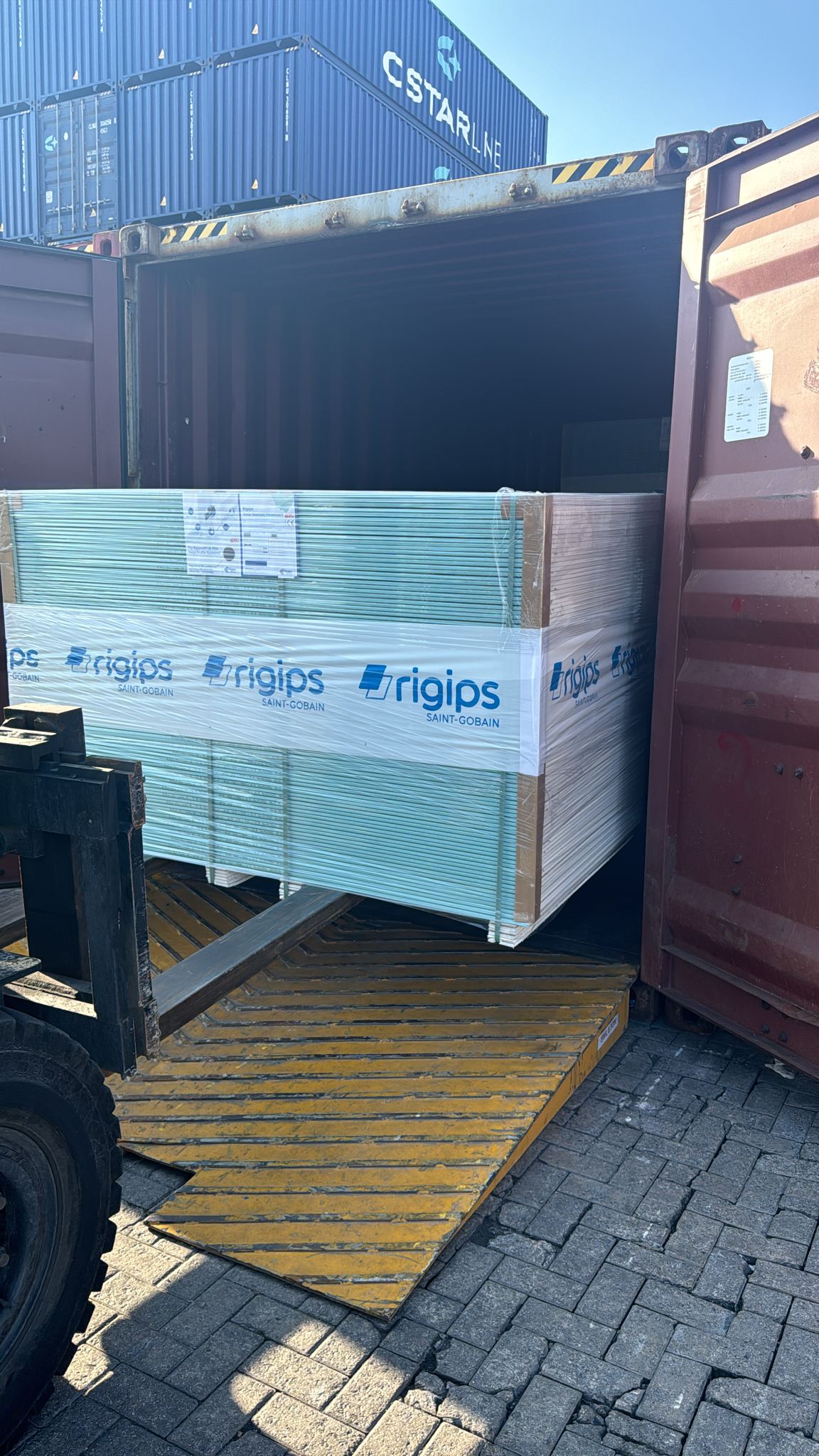
How to Load Gypsum Board into Containers
Gypsum boards are widely used in the construction industry, and their safe transportation is crucial for maintaining their quality. Proper loading into containers ensures that the boards reach their destination without damage, minimizing losses and maximizing efficiency. In this guide, we’ll cover the essential steps and considerations for loading gypsum boards into containers safely and effectively.
Why Proper Loading Matters
Gypsum boards are relatively fragile, with risks of bending, cracking, or surface damage if not handled carefully. Improper loading can lead to:
- Increased shipping costs due to product damage.
- Compromised project timelines caused by unusable materials.
- Financial losses for both suppliers and customers.
By adhering to proper loading practices, these issues can be avoided, ensuring safe and efficient delivery.
Preparation Before Loading
Choose the Right Container
- Standard 20-foot or 40-foot containers are commonly used.
- Ensure the container is clean, dry, and free from debris to prevent contamination or moisture damage.
- Verify the container’s structural integrity and ensure there are no leaks or sharp edges.
Inspect the Gypsum Boards
- Check for pre-existing damage or defects before loading.
- Organize boards by size and thickness for systematic stacking.
Use Pallets or Wooden Frames
- Place gypsum boards on sturdy pallets or frames to prevent direct contact with the container floor.
- Ensure pallets are of uniform size and can bear the weight of the stacked boards.
Step-by-Step Loading Process
Step 1: Arrange the Boards Vertically or Horizontally
- Vertical Loading: Place boards upright, supported by wooden frames or braces. This method saves space but requires careful securing to prevent tipping.
- Horizontal Loading: Stack boards flat in layers. Ensure each layer is evenly aligned to distribute weight properly.
Step 2: Secure the Boards
- Use straps, ropes, or load bars to keep the boards firmly in place during transit.
- Place cushioning materials (e.g., foam or cardboard) between boards to reduce friction and prevent surface damage.
Step 3: Optimize Space Utilization
- Arrange the boards compactly to minimize movement within the container.
- Utilize empty spaces with protective fillers to prevent shifting during transport.
Step 4: Protect the Boards
- Cover the loaded boards with waterproof sheets or tarps to protect them from moisture.
- Place silica gel packets or desiccants to control humidity levels inside the container.
Safety Tips During Loading
Use Equipment Properly: Employ forklifts or pallet jacks for handling boards to reduce manual lifting.
Distribute Weight Evenly: Ensure that the container’s weight is balanced to avoid instability during transit.
Follow Loading Limits: Do not exceed the container’s maximum weight capacity, as this can lead to accidents or damage.
Common Mistakes to Avoid
- Overloading the Container
- Excessive weight can damage the container or lead to unsafe transport conditions.
- Insufficient Securing
- Unsecured boards may slide or tip over, causing damage during transit.
- Ignoring Moisture Protection
- Gypsum boards are vulnerable to moisture. Always prioritize waterproofing measures.
Conclusion
Proper loading of gypsum boards into containers requires attention to detail, adequate equipment, and adherence to safety protocols. By following these guidelines, you can ensure that your gypsum boards are transported securely and arrive at their destination in perfect condition.
For professionals in the construction and logistics industries, investing time in proper loading techniques translates to cost savings, better client satisfaction, and reduced risk of damage.